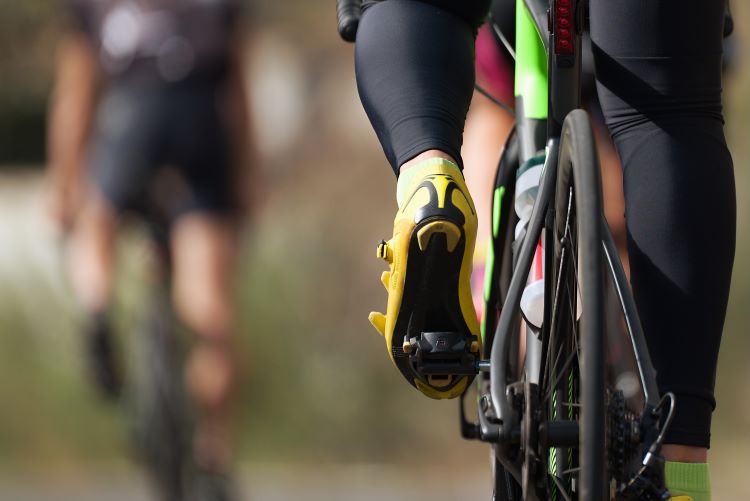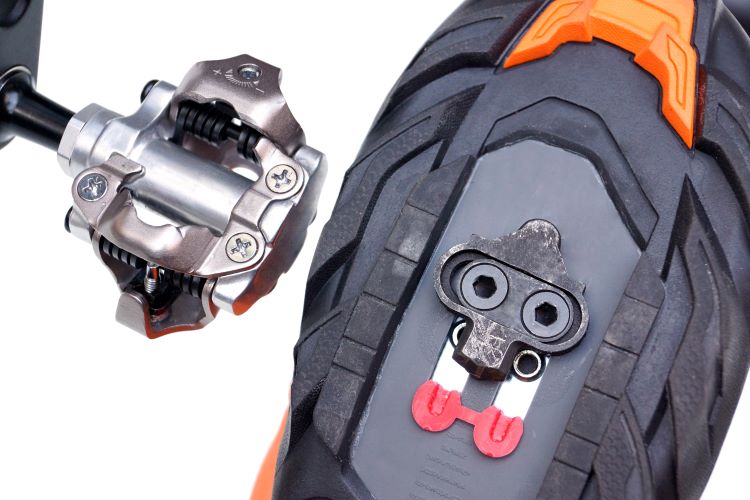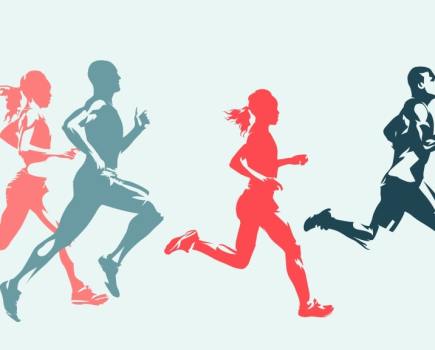Progressing from cycling with flat pedals to cycling with cleats and a pair of proper cycling shoes is a rite of passage for any cyclist looking to upgrade their performance. This change is normally driven by a desire for extra power, control, speed and balance. But it also marks the transition from novice to intermediate or advanced rider. Cleats can seem intimidating at first, but once you’ve mastered them, there’s no looking back.
What are cycling cleats?
Ordinary flat pedals have a wide contact area, so a cyclist can wear normal flat-soled shoes to stomp down on the pedals. This is the easiest way to ride a bike, and is perfectly functional. But the next step is to move to ‘clipless’ pedals, which are smaller and lighter, and feature a cleat attachment. That enables the pedals to connect with a small cleat embedded in the sole of a cycling shoe. This forms a stronger and more secure physical connection between your shoe and pedals. So, you’re no longer just riding the bike; you’re now a part of it.
The term ‘clipless’ pedals is a bit confusing. As you ‘clip in’ to these pedals, ‘clip pedals’ would be a better term. But ‘clipless’ is just an old-fashioned phrase which stems from the fact these more advanced pedals no longer require the traditional toe clips (or straps) that cyclists used to use as recently as the 1980s to keep their feet in place when riding bikes with flat pedals.
What are the benefits of cycling cleats?
Upgrading to cleats delivers multiple benefits. That strong clipped-in connection between your shoes and pedals encourages you to pedal through the whole pedal rotation, or as close as you can manage. That’s instead of just plodding down on the pedals during the downstroke, which is all that’s possible with flat pedals. So being clipped in improves pedalling efficiency and power output.
“Being clipped in, as well as cycling shoes being considerably stiffer than normal shoes, means that more of the energy you apply to the pedal goes through to driving the chain,” explains Richard Salisbury of Pedal Precision at the National Cycling Centre in Manchester, England. “Using cleats means you’ll use more of the pedal revolution to generate power, rather than just the downstroke. This can be practiced and leads to a smooth, circular pedal stroke.”
Cleats also provide extra control and safety, as your feet won’t slide off the pedals in wet conditions, on sharp corners or when riding over uneven terrain.
There are other advantages, too. One is encouraging you to pedal at higher cadences, which can improve your speed and power. Another is enhancing your comfort on longer rides, as your foot is held in the right position. With flat pedals, every bump can change your foot’s position, which will affect your knee angle. “Cleats keep the feet planted properly and the knees tracking better,” says Salisbury. “This can help prevent injuries.”

What are the different kinds of pedals and cleats?
There are many different cycling cleats and pedals. So riders must choose the best option for the specific demands of their riding discipline, the terrain and their personal preferences. The one consistent rule is that your pedals must match your cleats, because each style has its own unique cleat connection.
Broadly speaking, modern clipless pedals use either two-bolt or three-bolt cleats. Two-bolt cleats are small, which enables them to be recessed into the sole of a bike shoe. Or they can sit between the thick treads of an outer sole, so you can walk around easily and put your foot down when you need to. They’re made of metal, and most often paired with double-sided pedals, which are easy to clip in and out of, as you can clip into either side.
These qualities make them popular with mountain bikers, who find the two-sided pedals easier to clip into on rough terrain, and who can walk around over rocks and mud thanks to the grip of the soles. They’re also popular with new riders and commuters, who like to be able to clip in and out easily at traffic lights, and to walk around easily when they arrive at the office or café.
The most common two-bolt cleats are Shimano SPDs, but Crankbrothers also have a popular two-bolt cleat system – if you want to try them out, have a look at the prices for the Crankbrothers Eggbeater 1 clipless pedal below:
Three-bolt cleats are usually bigger, more triangular in shape and made of plastic, which allows for optimal power transfer. These cleats connect with larger single-sided pedals, which provide a larger contact area for power transfer and more stability over long distances. But they are a bit harder to clip into, as you can only clip into one side of the pedal, and they are more awkward to walk around in, because those big three-bolt cleats sit on the outermost part of the soles. These cleats are popular with road cyclists who want maximum power and control over long distances, but rarely need to put a foot down or unclip.
The most common are Shimano SPD-SL cleats but Look KEOs are also popular – find out the best deals on these below:
How do you fit your cleats?
Cleats are attached with bolts, using an Allen key. A cleat is best positioned around the middle of the ball of your foot, to maximise stability and power output, so the axle of the pedal is directly beneath the ball of your foot.
“First, make a mark on your shoes in line with the base of your big and little toes,” says Salisbury. “The centre line of the cleats and pedals should line up at the mid-point between these two markers, from front to back.
Next up, most cleats also have adjustment for Q-factor (how far apart your feet are when clipped in). If you know you naturally walk or stand with your feet close together, push the cleats a little more towards the outside of the shoes. This will mean your shoes will be closer together when clipped in and pedaling. If you naturally stand with a wider stance, push the cleats towards the inside of the shoes. This will mean they are wider apart when clipped in.
Finally, adjust the angle. Sit with your legs dangling off a stool and look how your feet and lower leg sit. If they rotate outwards slightly, rotate the cleats inwards a little, with the front of the cleat pointing a little more towards the big toe. If your feet point towards each other, point the cleats towards the little toe.”
On your first few rides, take an Allen key so you can adjust your cleats to find the best fit.
How do you use cleats?
To clip in, just slide you foot forwards onto the pedal, until you hear the click of the cleat catching the pedal catch. To clip out, twist your heel outwards so the cleat pops free of the pedal. Practice by leaning with one hand against a wall or fence. Then try it while moving along a quiet road or soft, grassy area. Over time, it will become so intuitive you’ll wonder how you ever cycled without them.
Related content:








